The Devil Wears the Russian Soldier's Uniform. How they tortured people in Kyiv region
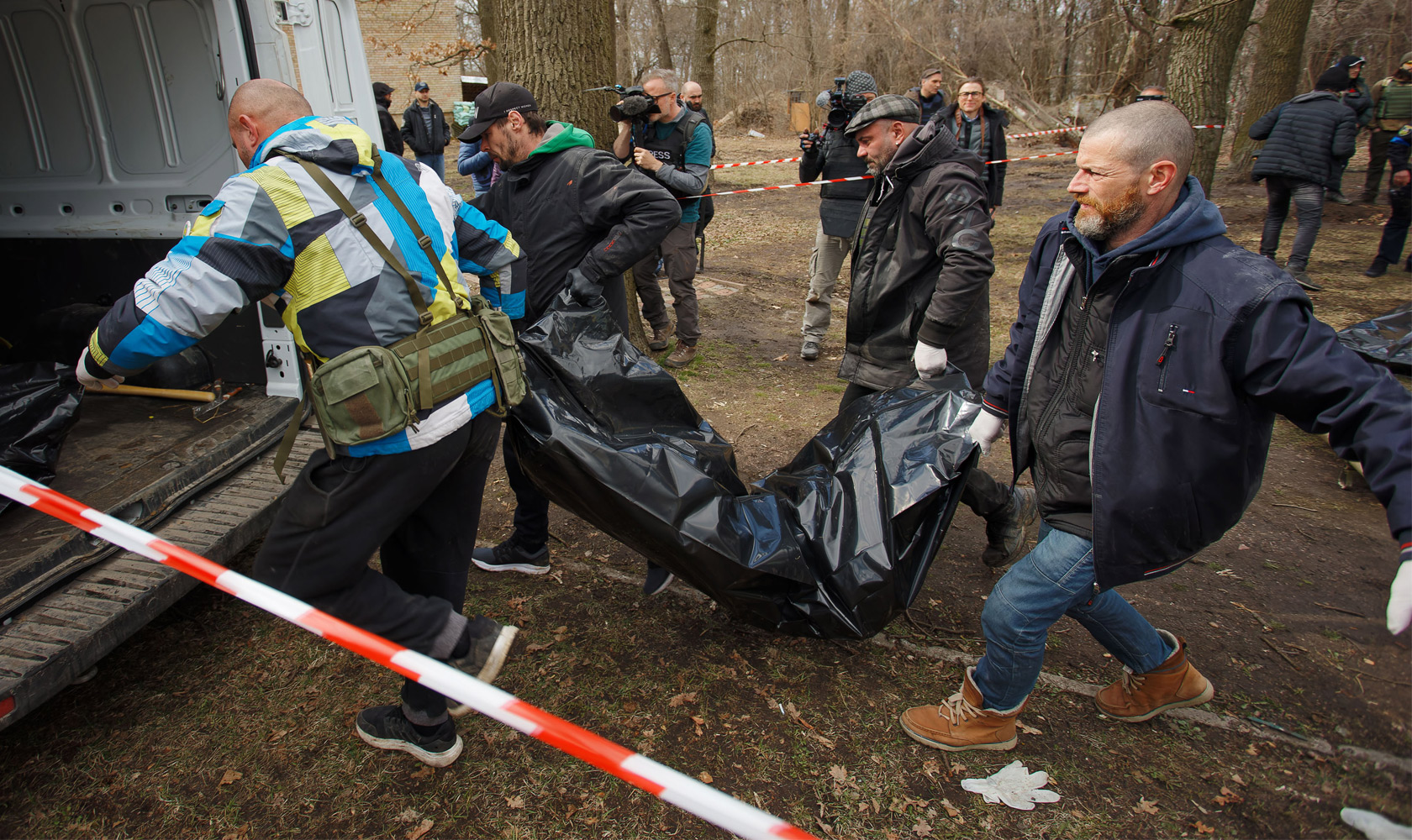
Will there be trial? Will there be judgement,
for tsars, big and small, on this earth?
Will there be any truth among the people?
Truth should prevail, unless the sun will halt
and burn the desecrated land.
Taras Shevchenko, 1860
In the evening of April 2nd, the Ukrainian military liberated the entire Kyiv oblast from the Russian occupiers. Yet, the huge joy from the news quickly gave way to the big pain.
Just two hours after the Ministry of Defense issued the liberation message, Ukraine and the entire world faced the first images from the liberated territories.
Multistorey apartment blocks and cottages that used to be a desired residential property, now stood as black as coal. Cars were smashed by tanks, sometimes with their drivers inside. Fences pulled to pieces with armored vehicles.
Men shot dead, lying in the streets, their arms tied. Corpses of children, buried in yards or simply covered with wooden boards. The entire families scattered on the sideways, incinerated, unrecognizable. Mass graves.
Dozens of those who decided to flee from the hell, proved unable to run away, to drive through, to carry a baby all the way towards the broken bridge in Irpin, to the Ukrainian checkpoint in Bucha. Hundreds of those who haven’t got anyone to call "mummy" anymore.
The Russian soldiers’ hands will never be clean again, after they’ve withdrawn from the Kyiv area.
The Russian culture will no longer be about Dostoyevsky, Pushkin, the Bolshoi Theatre or Peterhoff.
On April 2nd, Russia ultimately entered the recent history as the nation of rapers, murderers and looters. This time, the global "concern" as a form of response to its actions will definitely be insufficient. Unpunished evil, especially as cruel as that one, tends to proliferate.
On the second day after Kyiv area was liberated, the "Ukrainska Pravda" journalists traveled to the town of Bucha and the village of Motyzhyn, in order to face the reality behind the most painful images.
However frightening it is to see the cities in the aftermath of bombings and "Grad" shellings, the most scary thing is to look into the eyes of people; especially to those people who were tortured to death.
Motyzhyn. "My family are lying out there, in that hollow"
After the month-long occupation, Motyzhyn, with its population still amounting to one thousand, welcomes Ukrainian cars with waving hands and smiles.
People come out of their yards, hold back their bicycles and slow down their paces to wave to the yellow buses packed with journalists from across the world, on the way to witnessing their disaster: the demolished houses and murdered fellow villagers.
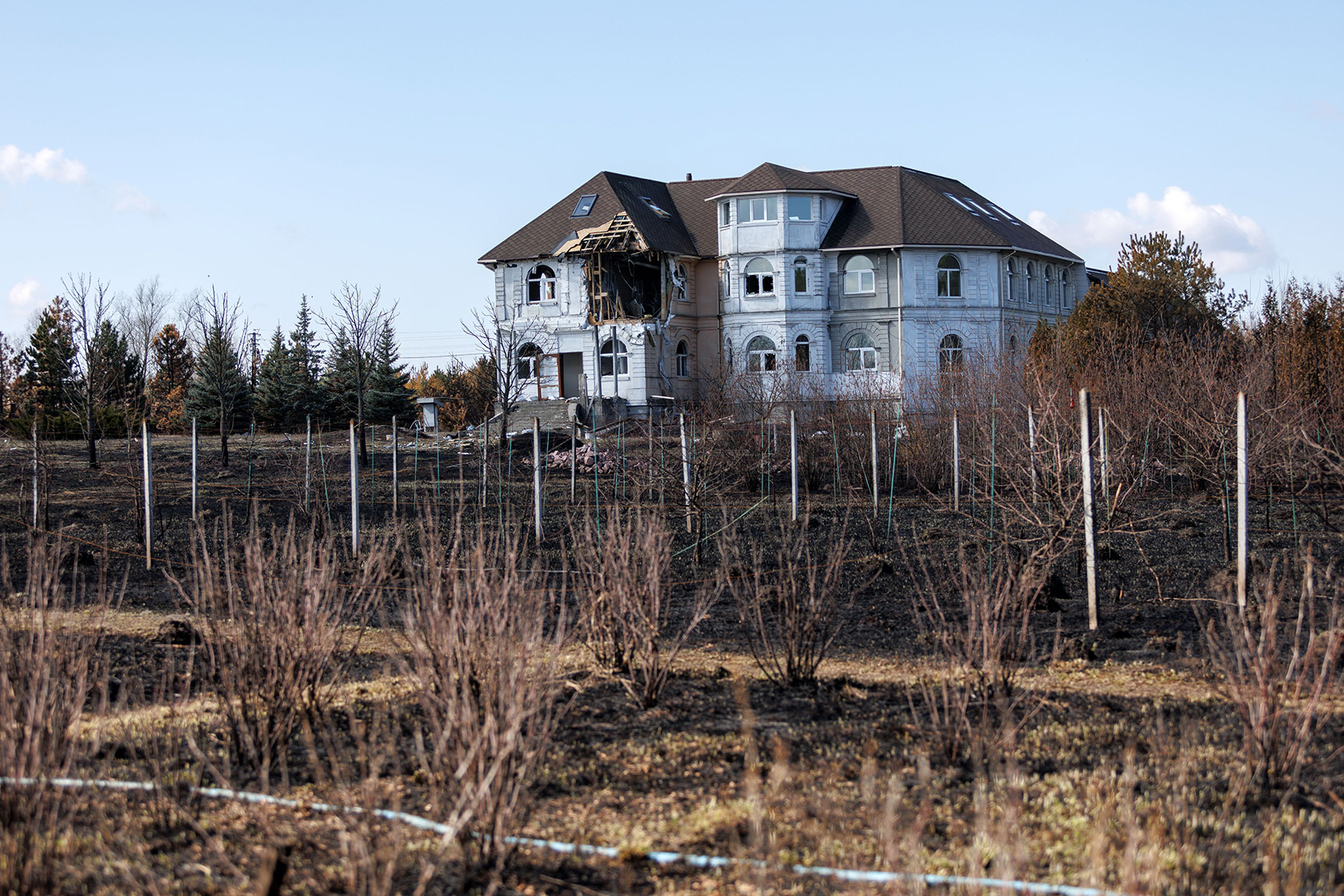
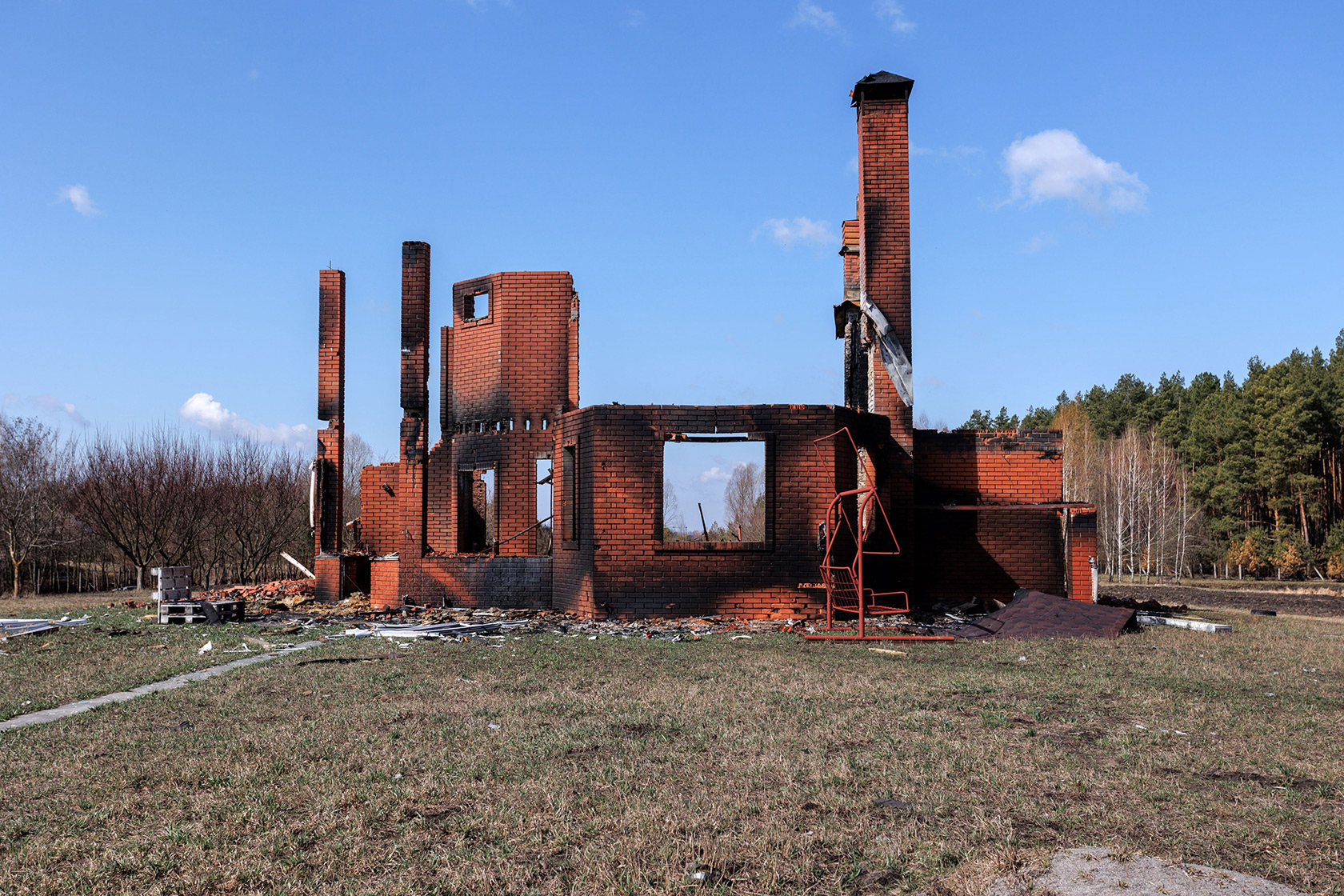
The war came into town on February 27th. Local people say that the Russians entered the village on a huge military convoy.
– 130 tanks came driving along the street, with Russian soldiers sitting on top, recalls Liubov Lues who works as a nurse in the local kindergarten and has just come to testify to the police about how her family was shot to death.
On February 27th, her husband took his hunting rifle and… opened fire on those tanks. The occupiers fired back, seriously wounding him.
– Our territorial defense guys came to him running; they said he had to be taken to hospital. Three of them went off: my wounded husband, our son and the driver. One bullet hit my son’s temple, he was shot to death, and the driver got a bullet in his neck. They would remain on that road for 6 days.
Then my daughter-in-law started saying: we must get them out somehow. Her husband took his car with a trailer, and drove there, under the "Grad" shells. So we finally managed to bury them, – Lubov shares.
Not all of them managed to bury their dead in this war.
First, the Russians and their machines settled down near the forest here in Motyzhyn, - a local policeman tells the UP. It’s a spacious lawn, with several houses on it, now burnt down and damaged.
After the occupiers were shelled by the Ukrainian military, they moved their tanks aside, and fortified their positions amidst the pines.
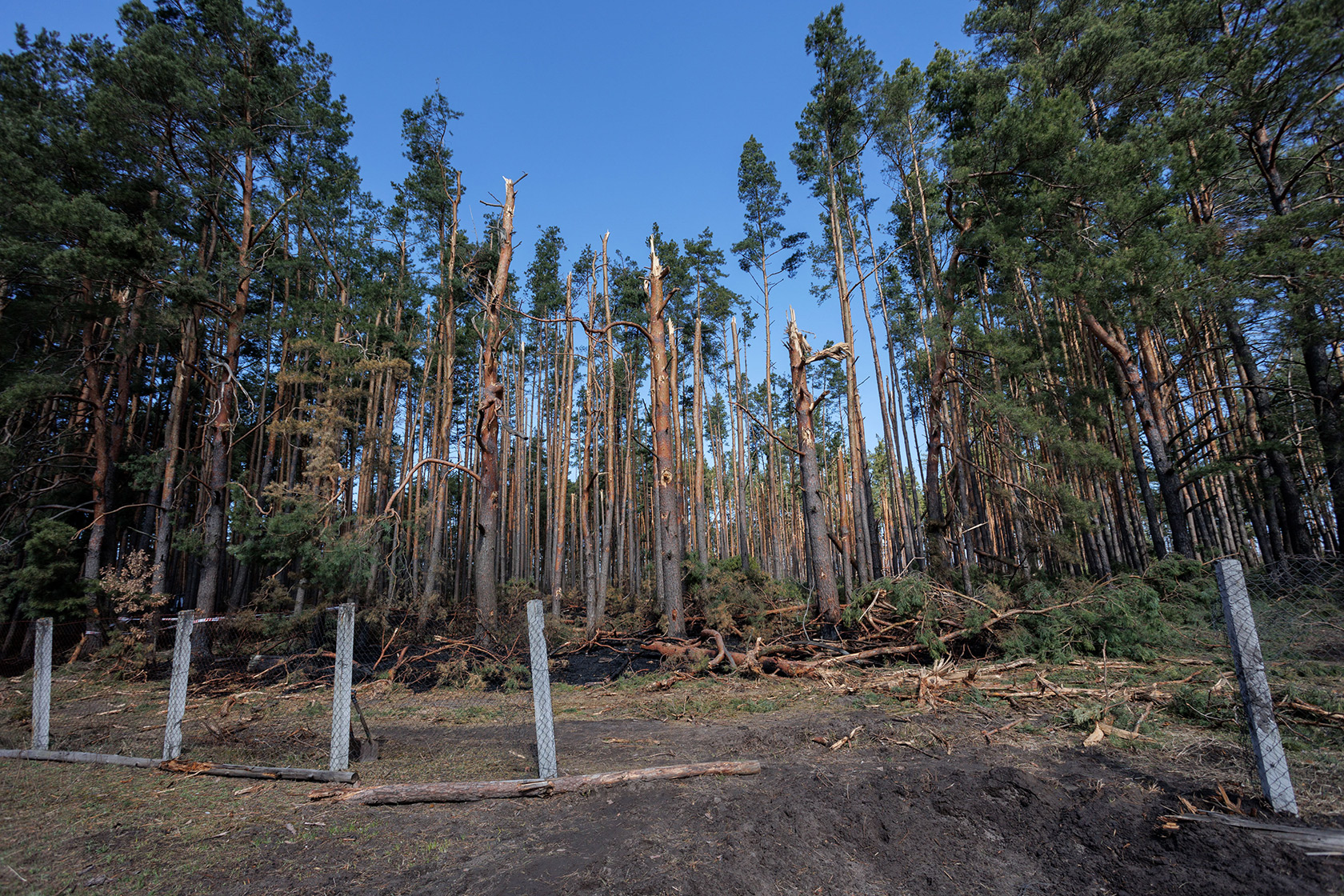
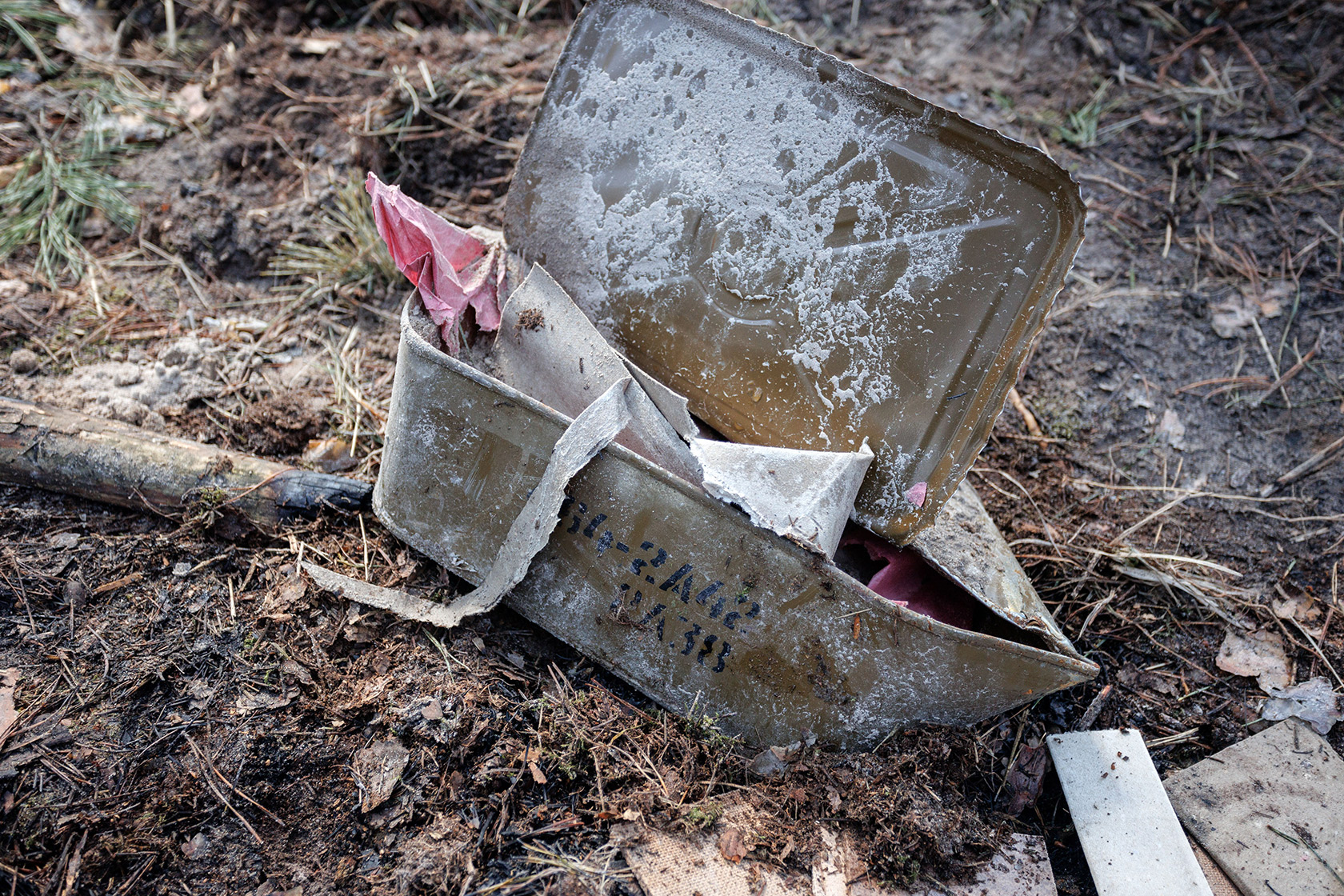
Some 200 metres away from their trench shelter, the Russians dug a grave with a help of a tractor. One grave was used for four people.
The three persons who found their tragic death, are already identified: these were Olga Sukhenko, village chief, her husband Igor and their son Olexander, who had intentionally remained in Motyzhyn to help their people. Olga had been head of the village for 14 years.
The occupiers kidnapped her from her own house on March 23rd: first they took the family car, then they came to take Olga and her man.
Oleksander’s girlfriend Darya whote in social media that Oleksandr first found the Russians to be fairly humane; they promised to bring the parents back alive. And then… they came to get the young man, too. Their fate was unknown until the moment when the village was liberated.
The traces of the occupyer’s "humanism" remained on all the dead bodies: their faces were smashed; their heads tightly tied with a fabric; the grave stayed open. The policemen working on the spot, confirmed: all of them were severely tortured.
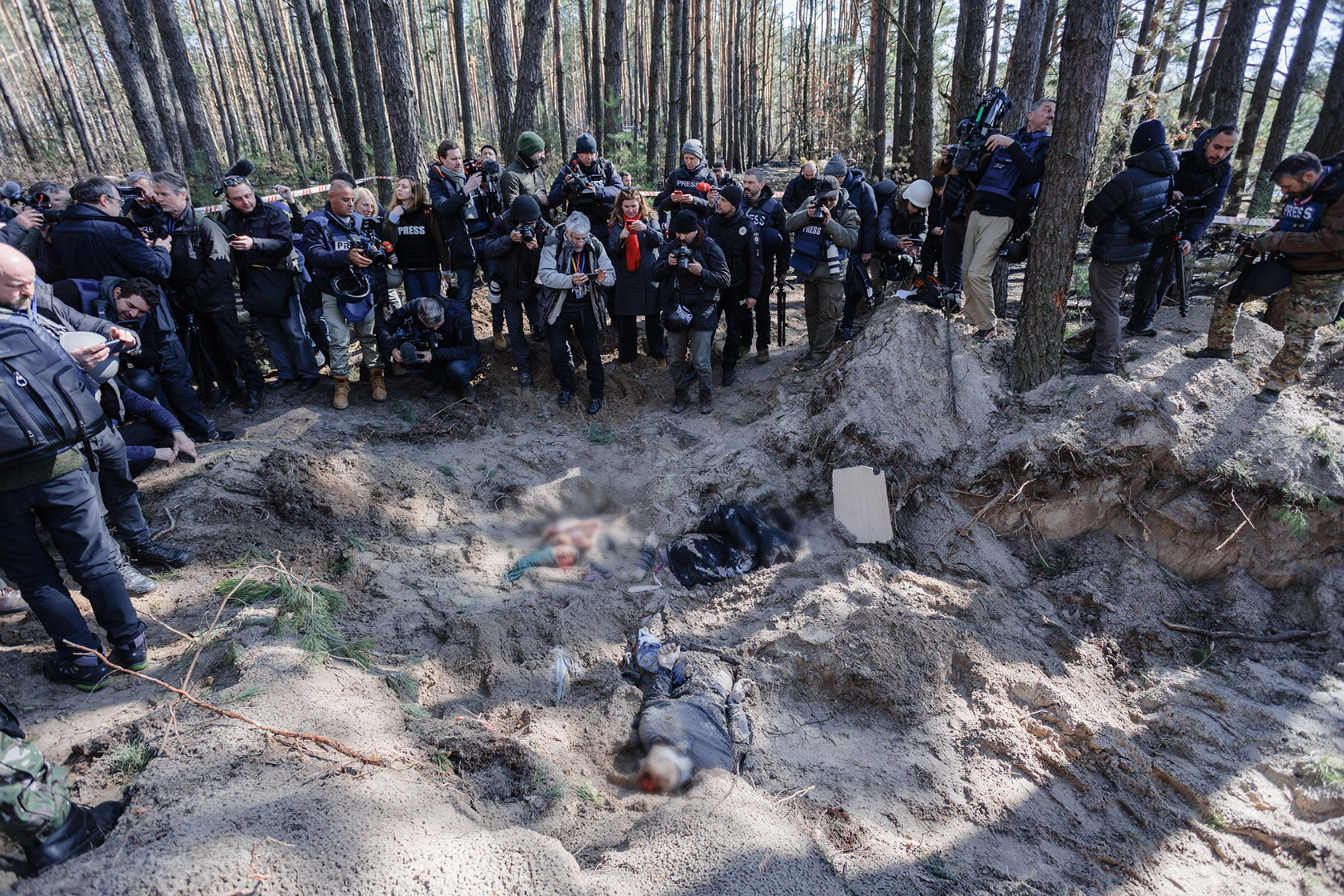
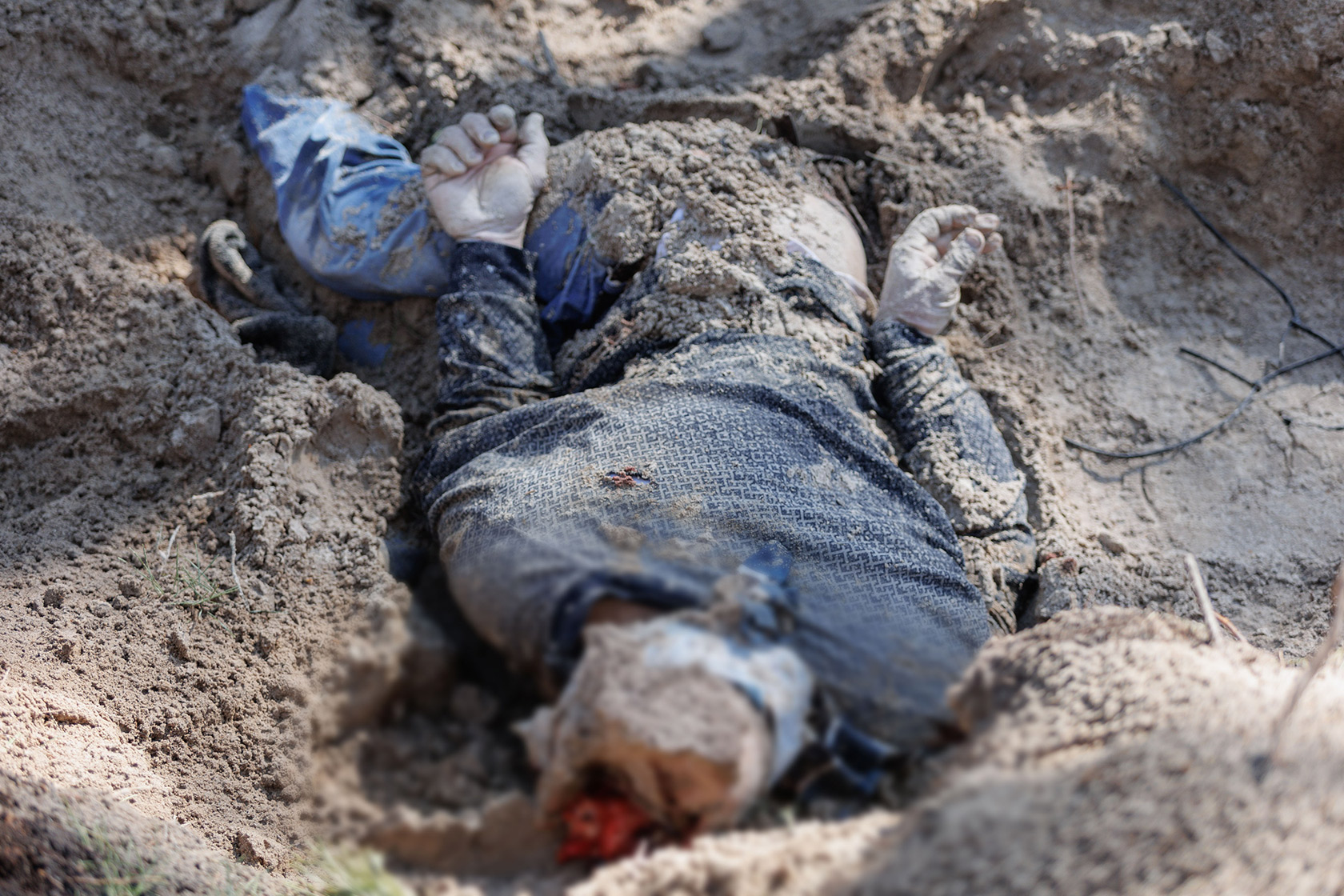
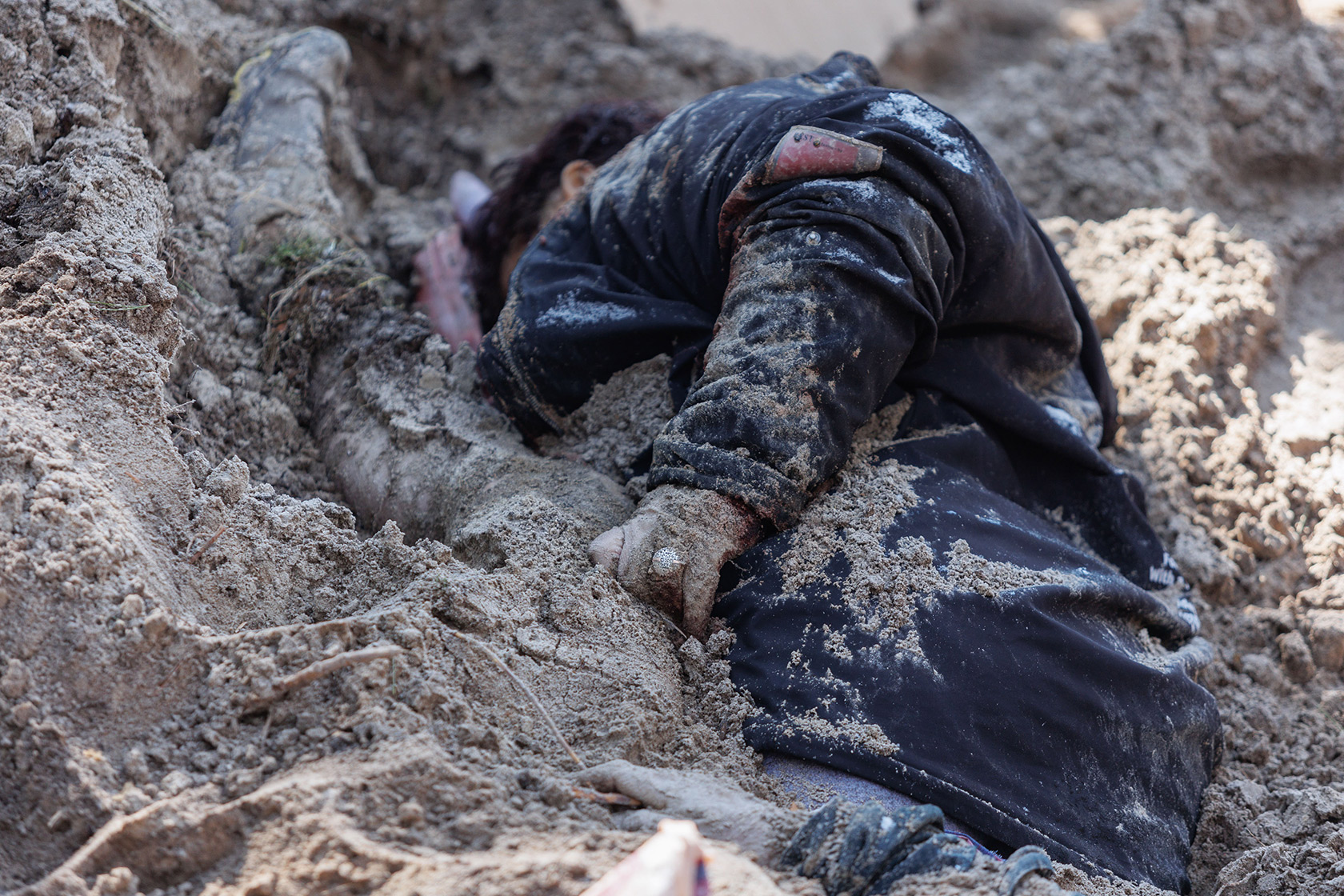
One more person, apart from journalists, is watching the scene: it’s Olga’s father-in-law, Igor. Away from the grave, on his hunkers, he is covering his head with his arms, his eyes down.
– My family are lying out there, in the hollow, – he says quietly, without raising his head. They were not military; they weren’t threatening anyone. Why were they killed? Because they were Ukrainians. It’s an all-times aim for the Russians, to make sure that the Ukrainians no longer exist. They have been doing it for ages, and here they go again.
If the big countries in the west don’t want… this to happen in their cities, let them give us more defence tools, more weapons. We are alone; we are fighting with our own hands, and it is us who are dying, not them.
Apart from the three persons from the Sukhenko family and one more, yet unidentified person in that grave, the occupiers tortured to death another man about 40 or 50 years old, in Motyzhyn. His body was found in an empty deep pit near the forest, without outer clothing, with a long yellow rope on the neck.
Yet another person, a young woman who could have been killed by the Russians, is still to be found.
Bucha. "These guys are worse than the Germans".
One day, when painters take to depict the events of the Russian-Ukrainian war, there will certainly be one picture representing the battle on the Vokzalna street in Bucha; its photos went viral across all the Ukrainian and international media back in March.
Those images show dozens on Russian tanks, KAMAZ trucks and other vehicles, still on fire, amidst private houses in a narrow street. On February 27th, they took a good hit from the Ukrainian artillery.
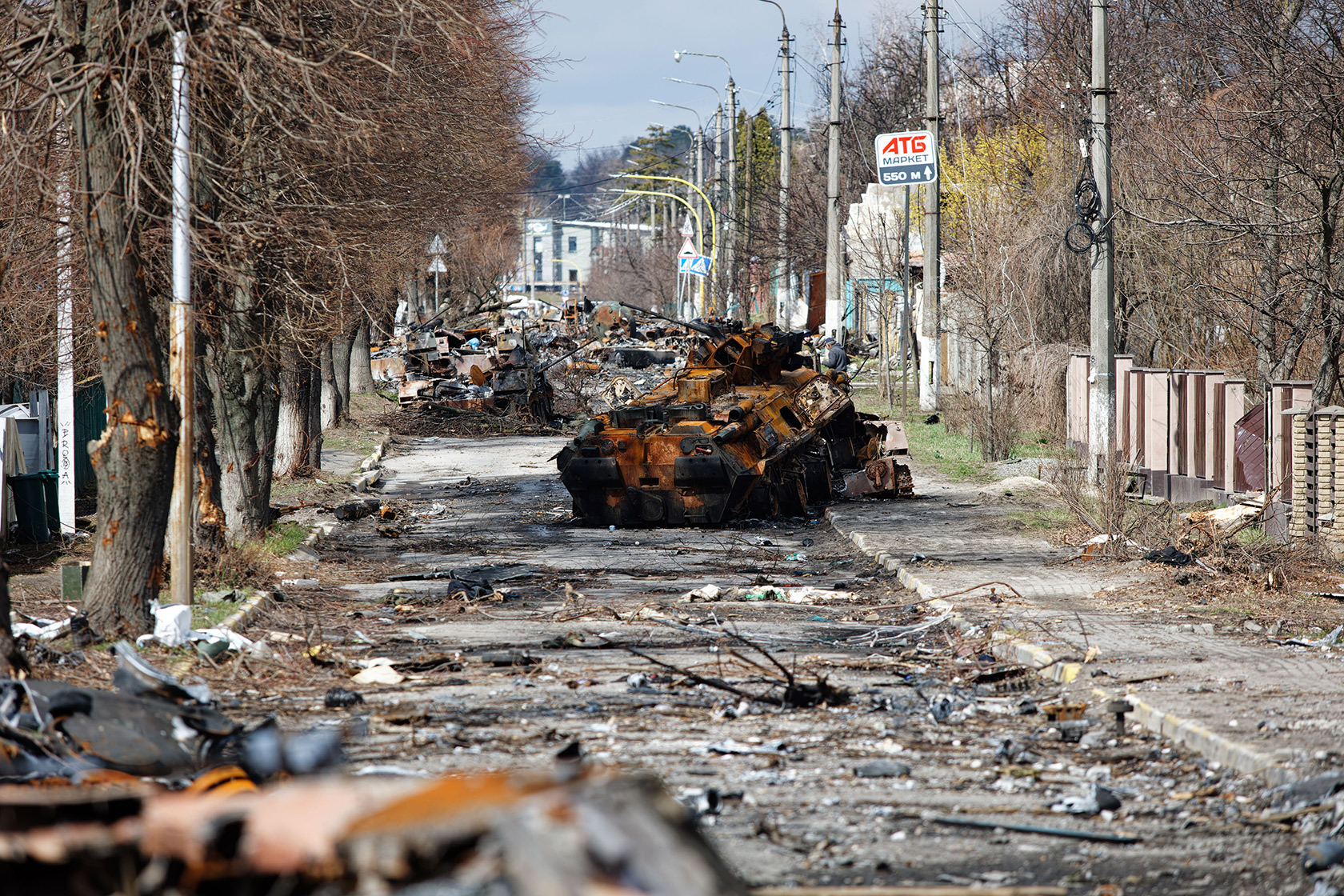
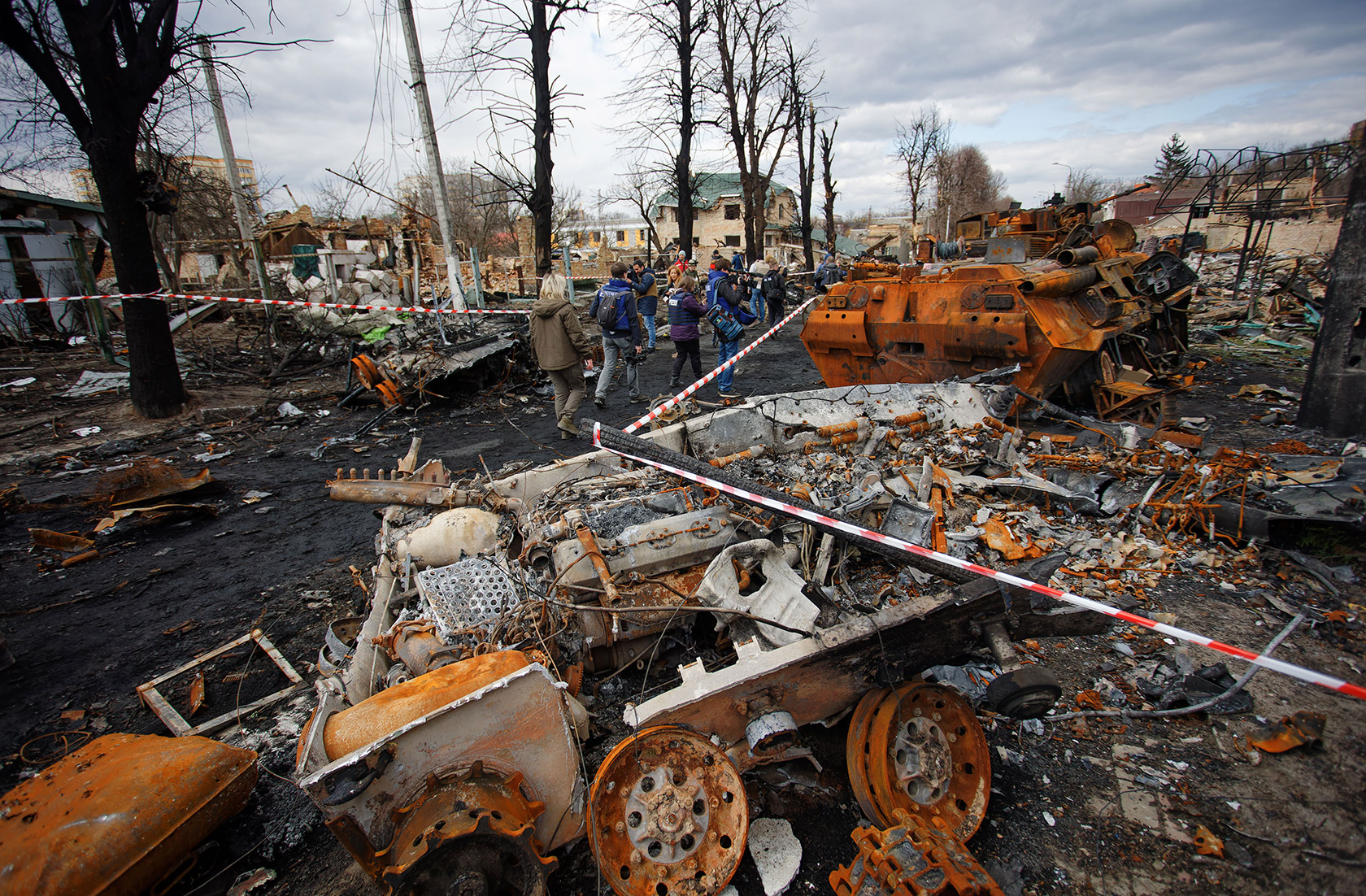
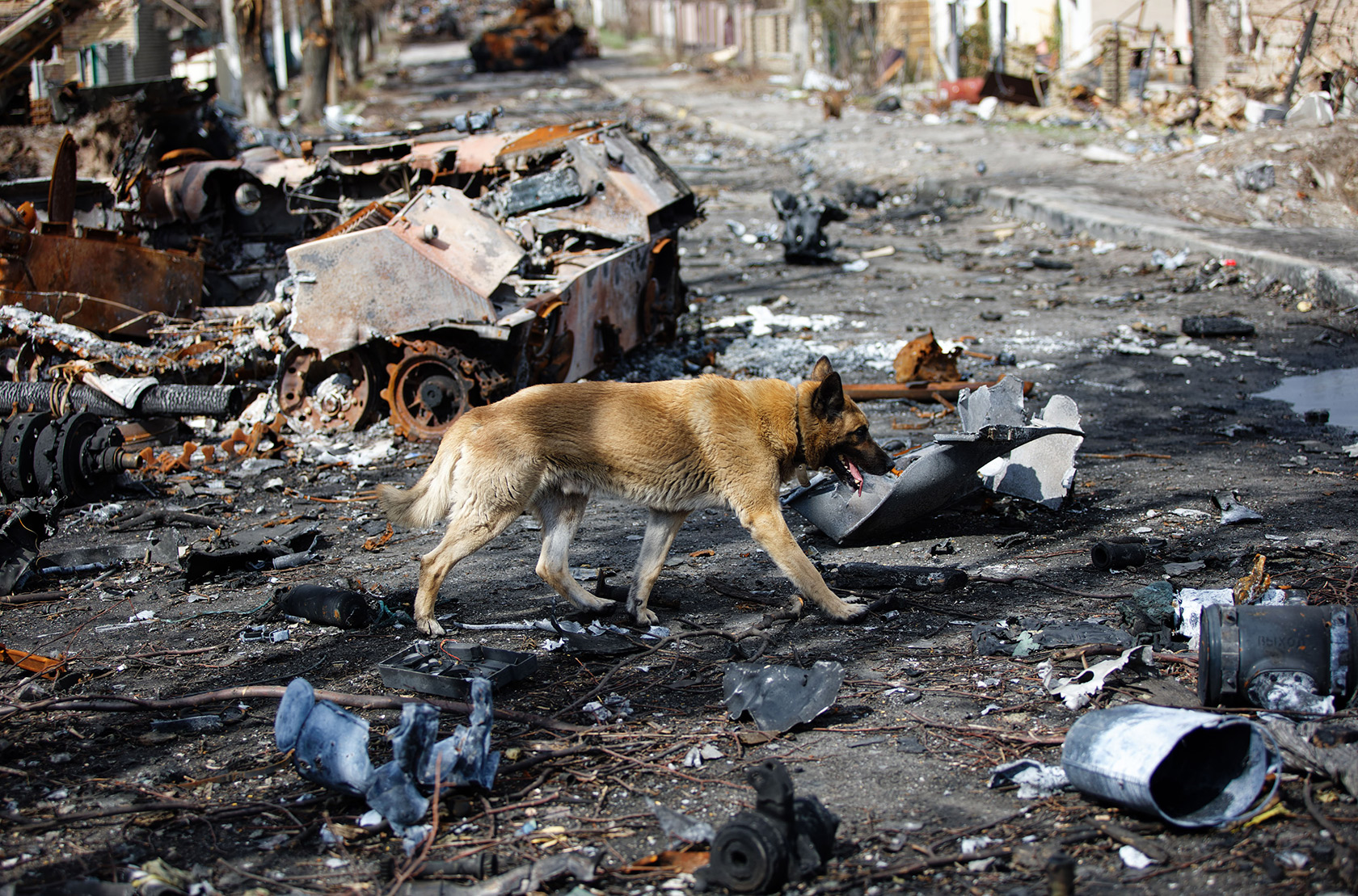
– My dear, it was blasting like hell, I nearly got deaf! – Hanna Volodymyrivna, a lady from Vokzalna street, almost shouts as she tells her story.
Her green fence made of corrugated board, is strew with holes, as big as a quail’s egg. Yet, the house is miraculously intact, unlike most of the neighboring ones with torn-off roofs. The whole family, including the husband and the sun, are alive.
They spent almost the whole of occupation time in the house, because the basement was too cold. The town is still without electricity, gas and water: food is still cooked on the bonfire. Mobile internet is completely off.
That is why the news about Bucha and the whole Kyiv vicinity being liberated, originated from the streets, and not from the media: as soon as the shooting over the heads stopped, people started to leave their basements and yards. Later on, they saw the Ukrainian servicemen.
– Corpses were all over the place, – Hanna Volodymyrivna tells. – I don’t go there, as my health is too weak, but my hubby walked around, so... Over there, between the little green house and the little red one (she gives a nod towards the neighbouring house, with its roof blown off – UP) there are two corpses, lying there for ages. They already turned blue.
Yet, three days after the town was liberated, most of the corpses were removed from the town’s streets. Some still remain on the sideways.
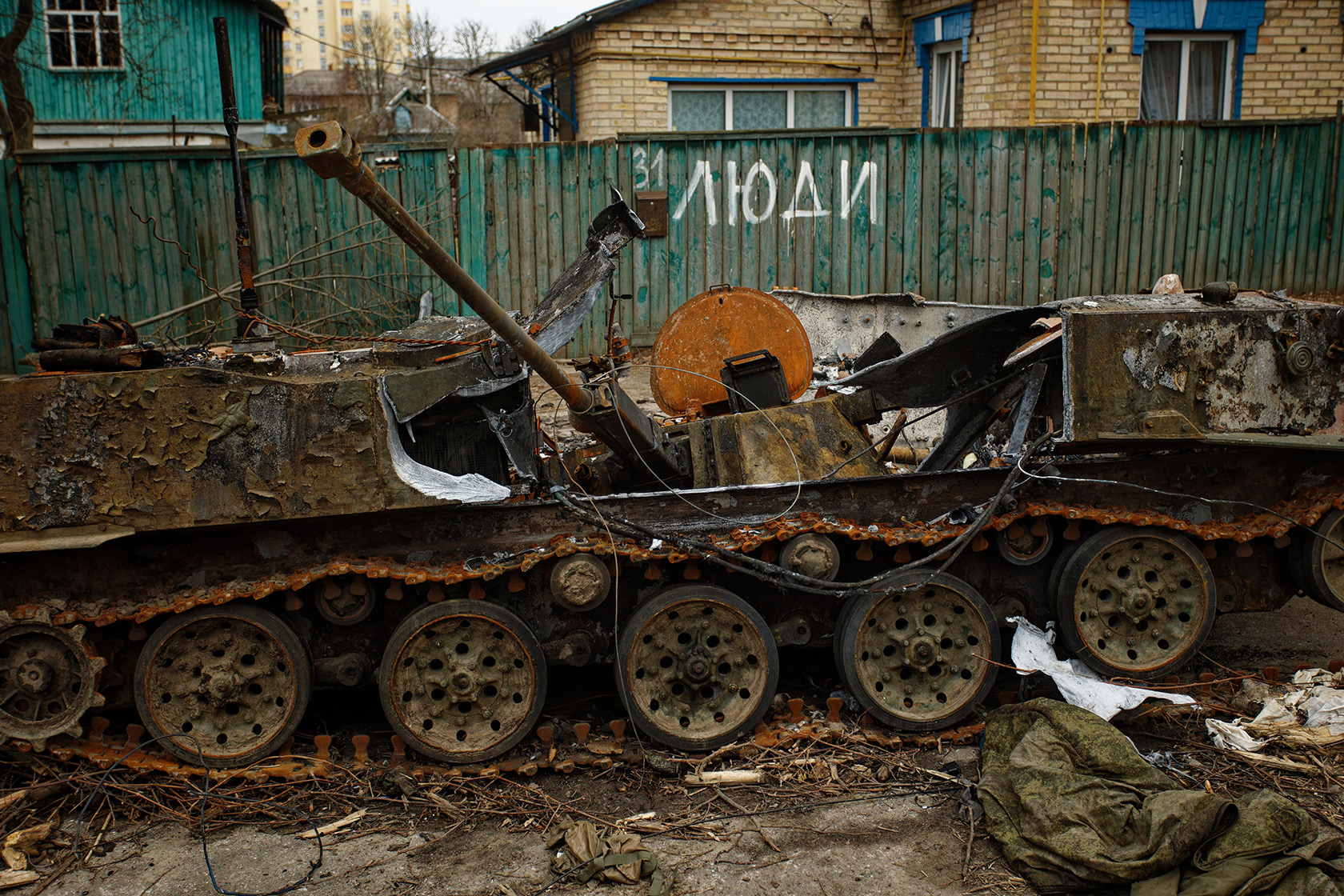
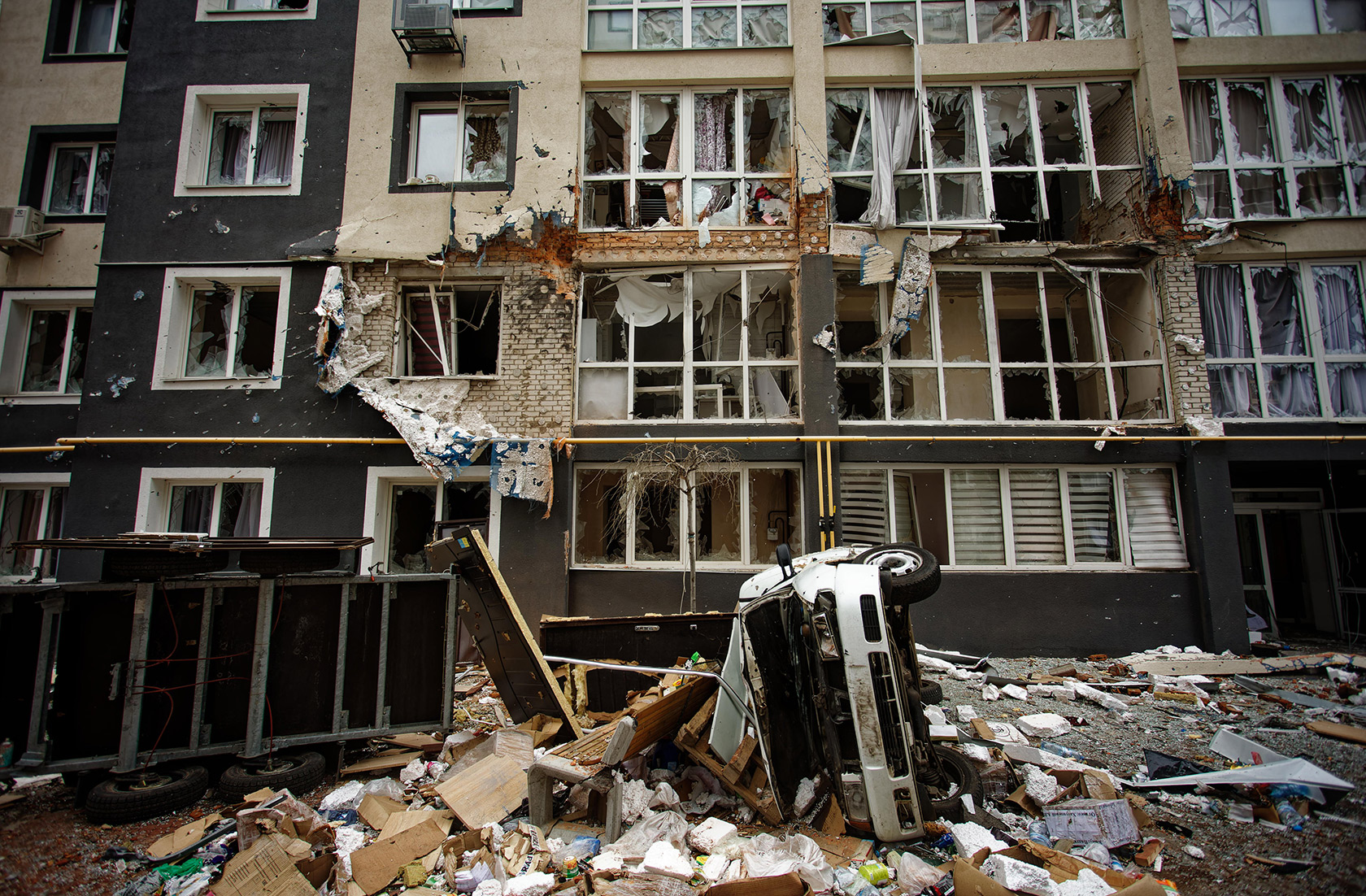
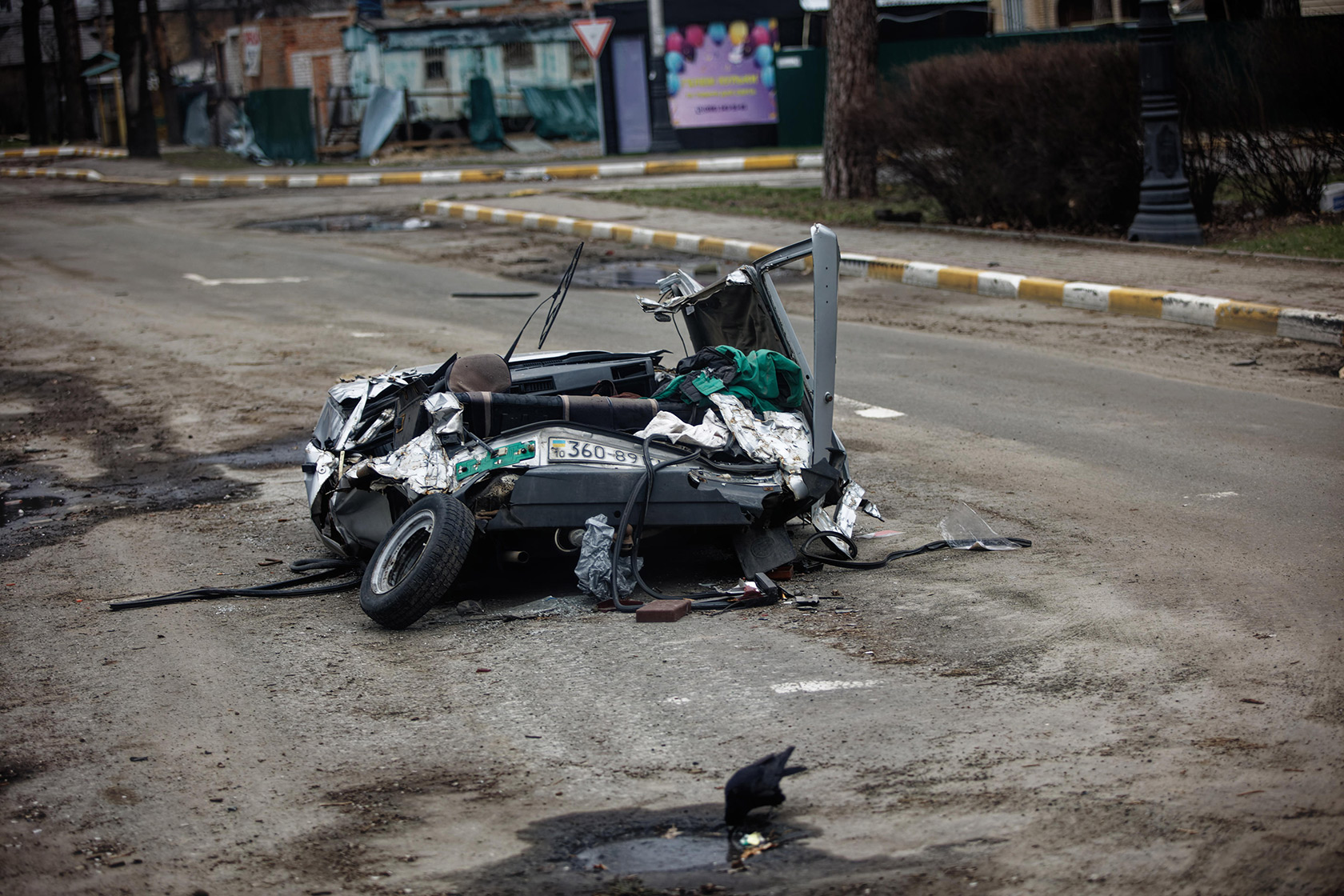
Finally, Hanna Volodymyrivna tells us that she is already 80 years old. She was born on September 18th, 1941, a day before the Germans took Kyiv. She doesn’t have any memories of them, but she has heard so many stories, and comparing them to what she went thgouth in the occupation, she says that "these guys are worse than the Germans".
– After the war, I won’t take a single look into where the damned Russia sits, – the old lady hardly stops herself from spitting. – They keep saying it’s their chiefs… But what’s about their population? People say "Great Russia", "Great Russia", but population is shitty. That’s my own conclusion.
Bucha. A torture chamber in a children’s resort house
The Russians established one of their posts in Bucha using the premises of the children’s resort house "Promenysty" ("Shiney"). Thus, next to the tags made with children’s handwriting "Dasha, 2018, 3rd summer shift"), came green boxes containing dry rations marked "Army of Russia", and St. George ribbons.
In "Promenysty", the occupiers dug out several trenches for their equipment; they set up the fire positions using sacs and trunks; somehow patched the new plastic windows with beige-coloured mattresses.
Nearby, they parked the three stolen cars, including a oldie "Lanos", and a posh Mercedes with white leather seats, and tagged them with white V-letters.
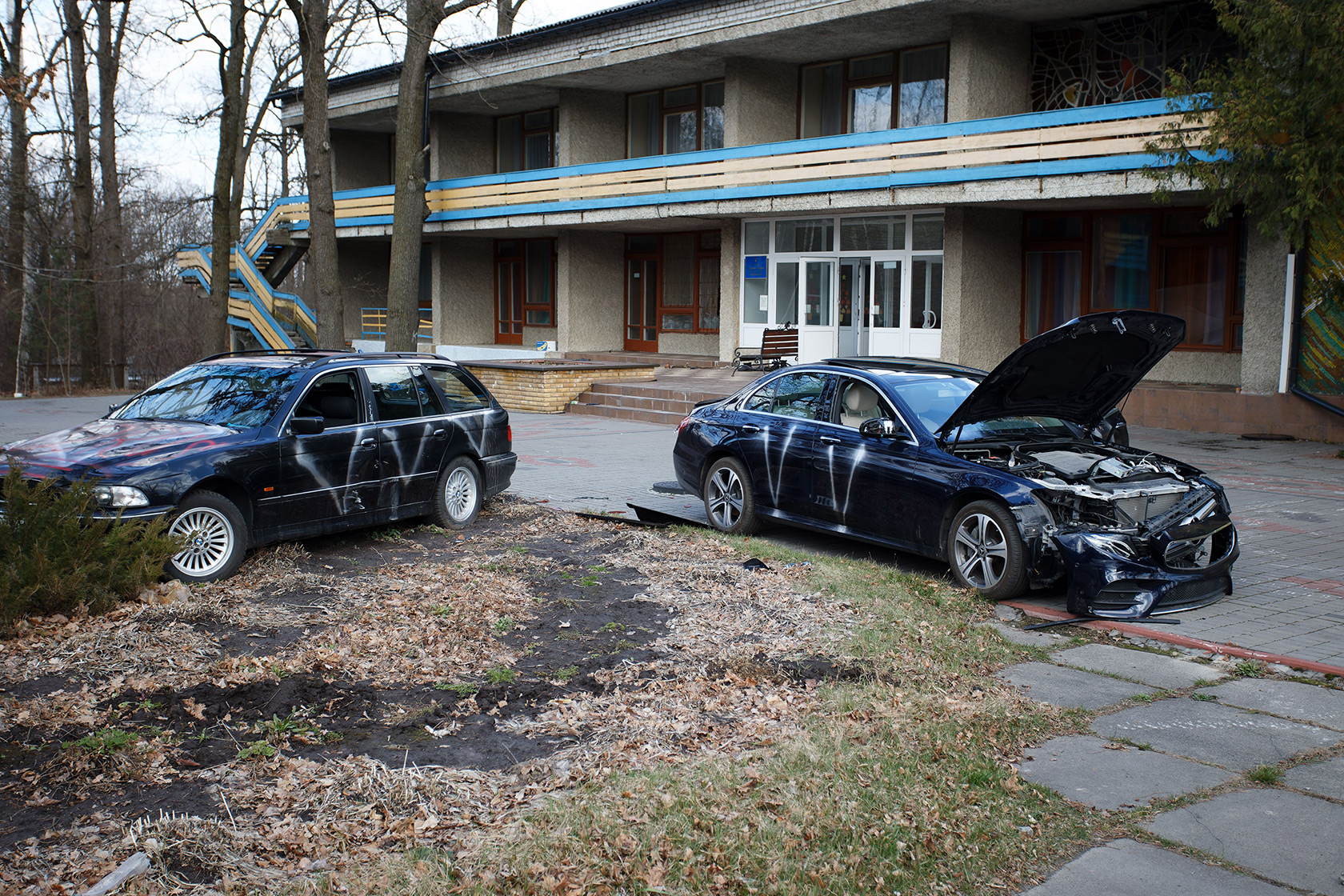

They set up an improvised canteen beyond one of the dormitories and equipped it with a water closet and a sink. There still remains a table, a charred kettle and a mirror with an orange soap holder.
Just a couple of meters away, in the basement of the campus building next doors, they equipped a torture chamber. A real one. And that is where, after the town’s liberation, the law enforcement found the mutilated bodies of 5 men.
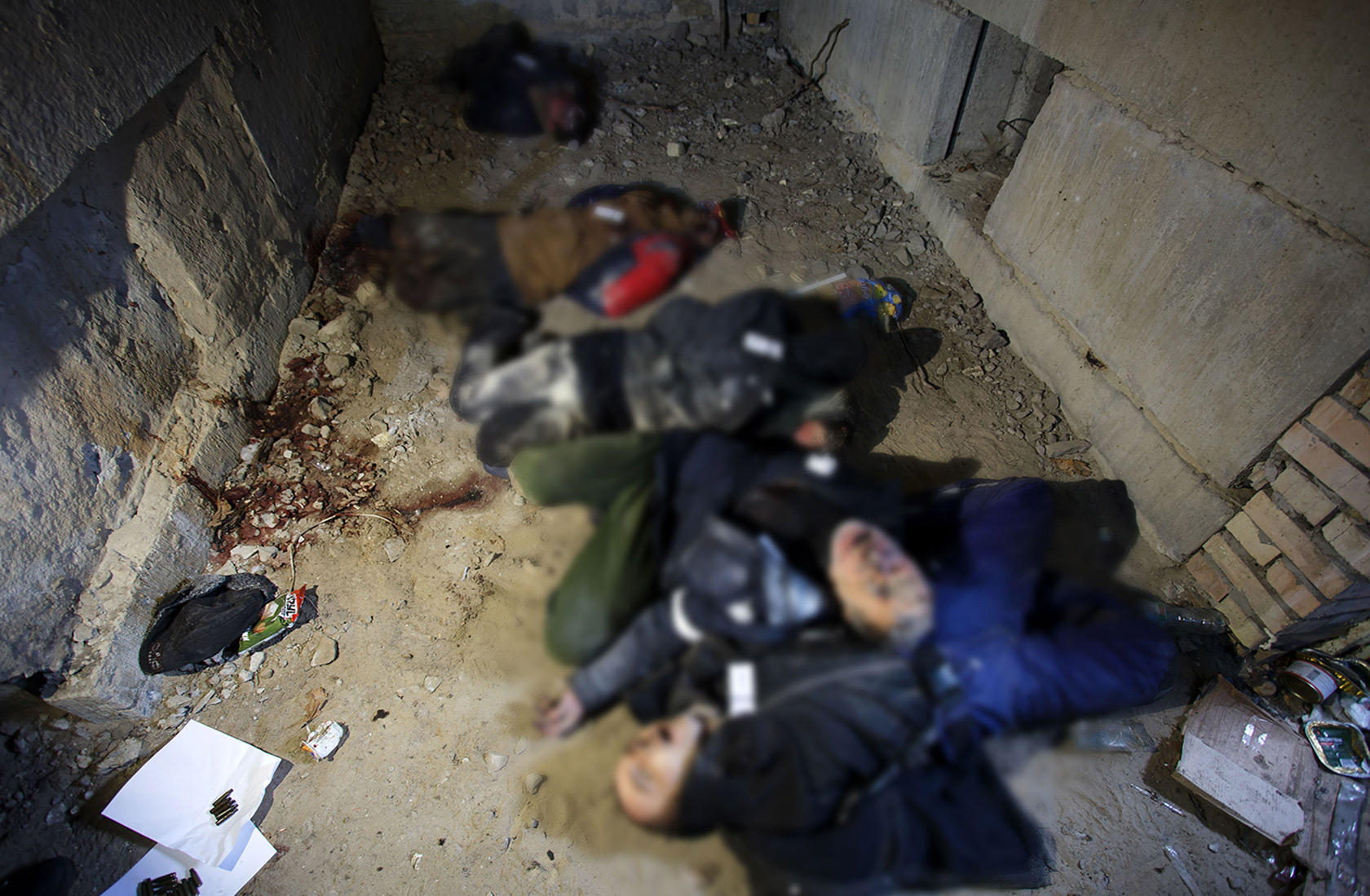
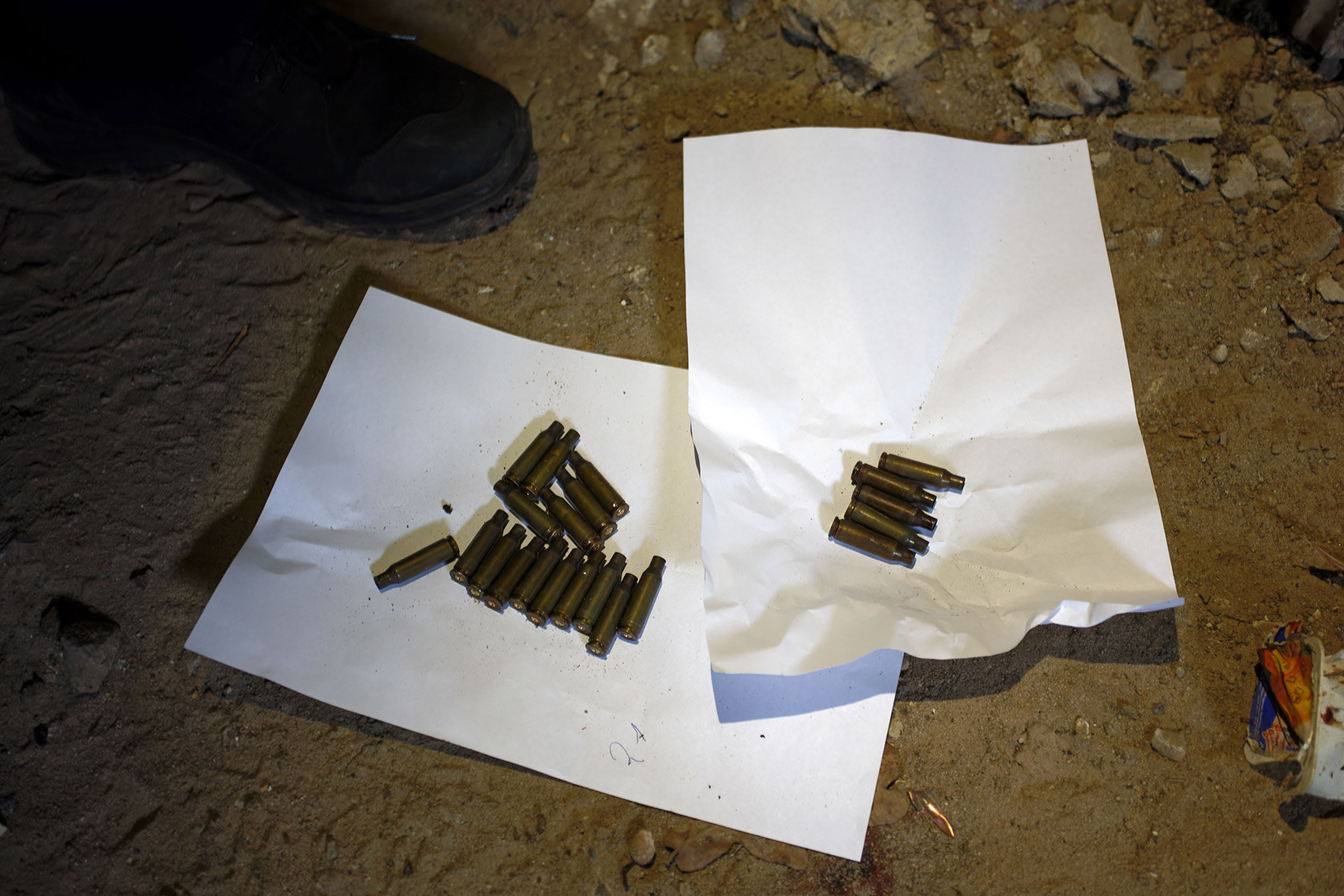
– The bodies have been lying there for about a week like this, says the policeman with a searchlight in his hand; journalists go down there one by one, stepping over the scattered pasta and "rice porridge" spilled from the Russian dry rations.
In his opinion, these people were shot a couple of days before the Russians retreated. Before that, they had been excruciated.
Some of them have arms tied with white zap straps; so tight they stick into skin. One of them has at least three bullet wounds: face, knee and heart. The other one was for the long time beaten with something blunt, possibly a gun-butt, on his head.
Against the blood-stained wall, the policemen laid down the shells collected in the basement, 21 in total. This means, about 4 shots per person.
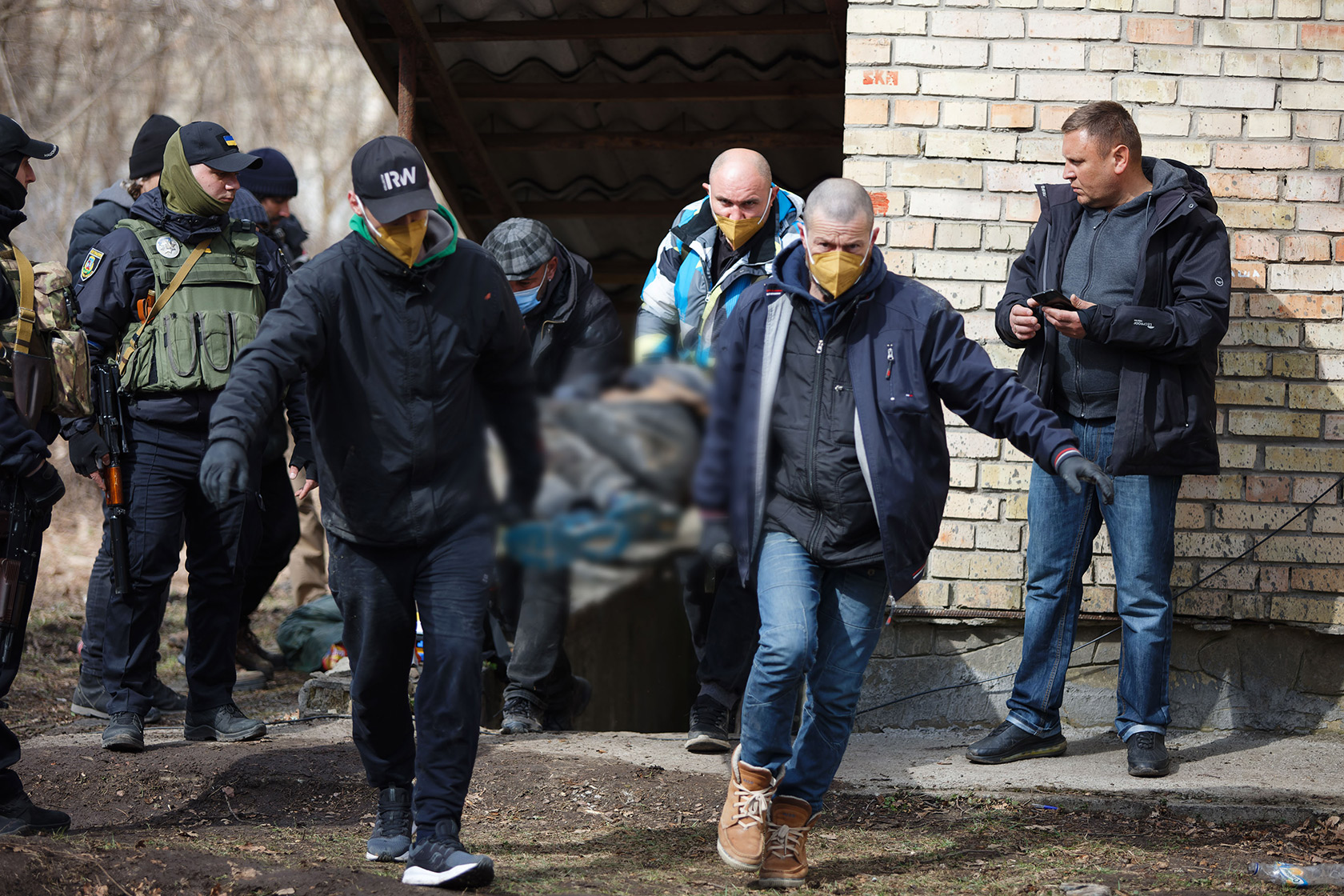
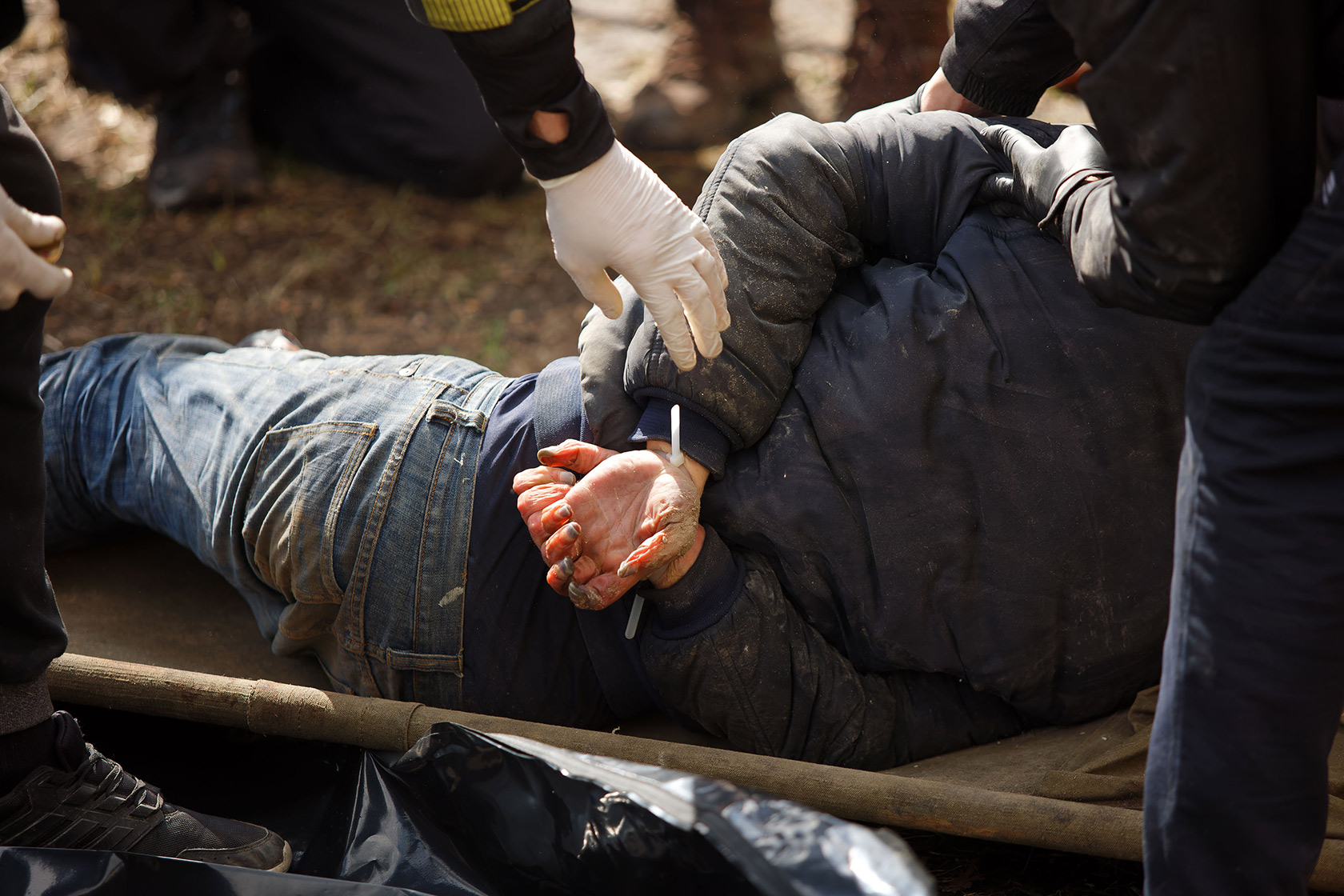
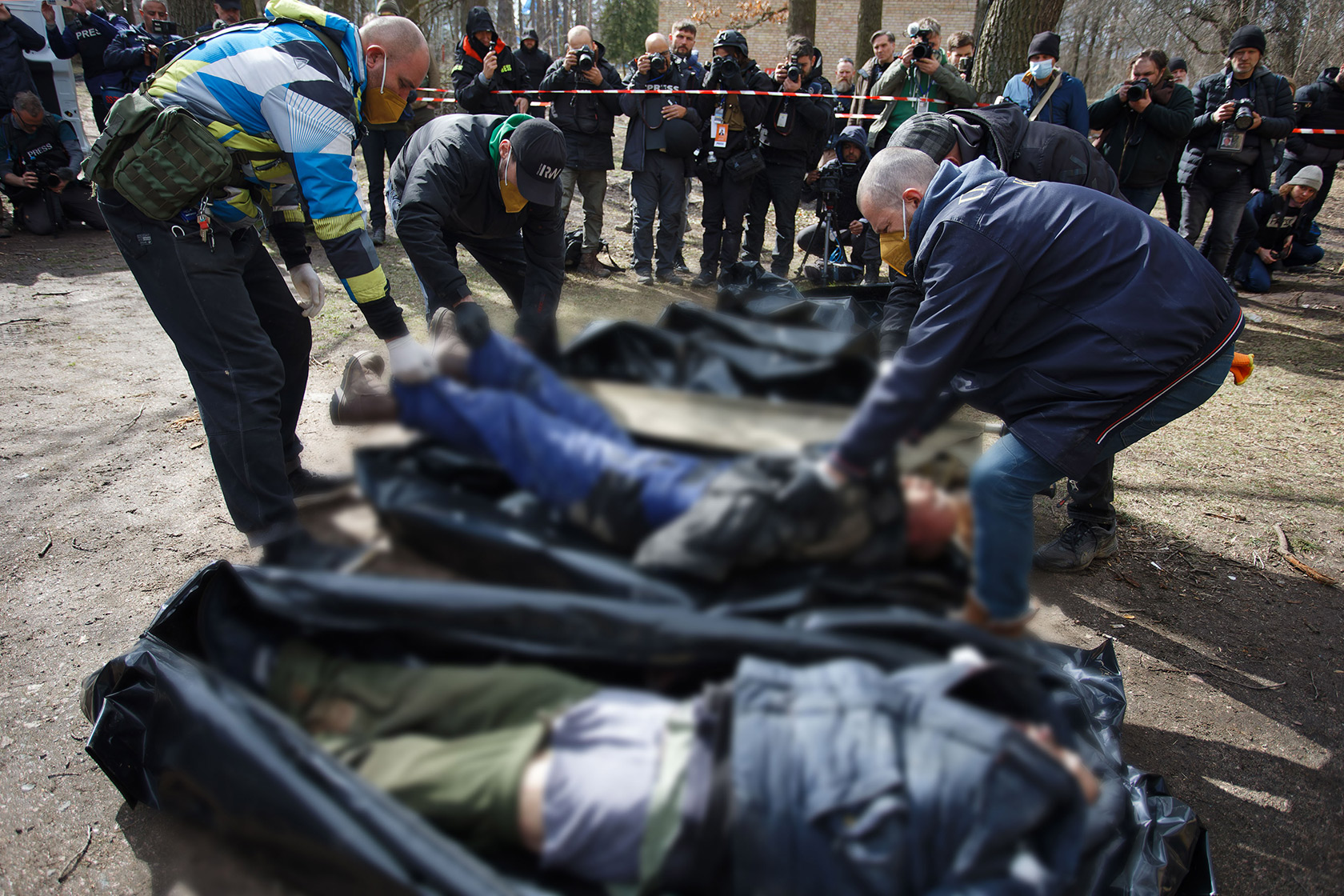
They are someone’s sons, beloved husbands, maybe dads or granddads. Later on, a picture of a long-haired 8-10 year old girl will be found in the pocket of the man with a grayish beard.
– If no families and no documents are found, they will travel to the mass grave, – according to Artem and Vladislav, the two local men on the black car marked "Cargo 200" who are in charge of burying the dead.

Before the war, Artem was an artist, and Vladyslav was a butcher.
Over the month of occupation, working under bullets and artillery shellings, they carried out and buried about 300 persons, all in the mass grave near St. Andrew the Apostle church. Some people buried their neighbours just outside their houses.
According to various assessments, at least 400 civilians were killed in Bucha.
– Men aged 50-70 were lying along the road, with their heads shot through. Younger ones were found in the yards, also shot in their heads, with their hands tied, – Artem tells about the traces of the month-long occupation.
From what he could see, the town was invaded by the Chechens, the Buriats and the "Russian commanders". Their activities were targeted: they had the lists of the military, including the former ATO fighters.
– I came into at an apartment owned by a man from the Academy of Internal Affairs, as I had been asked to take care of their property. The Russians came in, put me face against the wall, and racked the slide twice (of a machine gun, UP).
One of them found the documents and said: "Oh, he is the man. Let’s work". "Do you want it in the head or in the leg?", he asked. "Let me cross myself", I said. And then, the other guy shouted: "No, it’s not him". He had just found the flat owner’s picture.
***
One day, the local authorities of Bucha, Irpin, Hostomel, Borodianka and other towns, will tell all those who had the time to go, the long-awaited "You can come back".
And people will buy their tickets from Berlin, Warsaw or Lviv, and will travel, full steam ahead, towards the place that, before February 24th, was their home. Even those whose homes are no longer exist in reality. One of the reasons would be the need to search, dig out from mass graves, yards and playgrounds, their beloved ones.
Kyiv suburbs will henceforth bear deep war wounds.
Like all of us.
Olga Kyrylenko, Dmytro Larin, UP